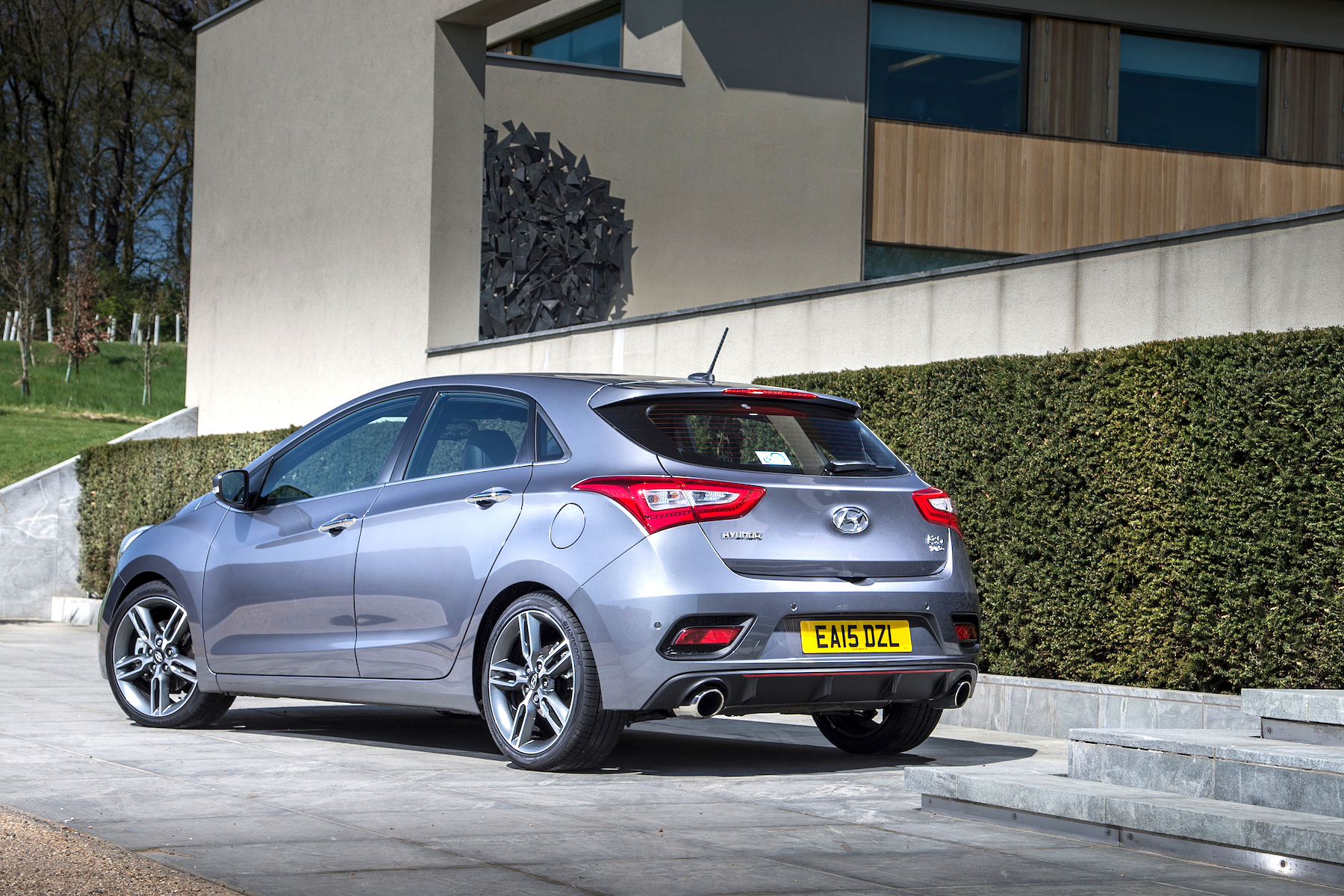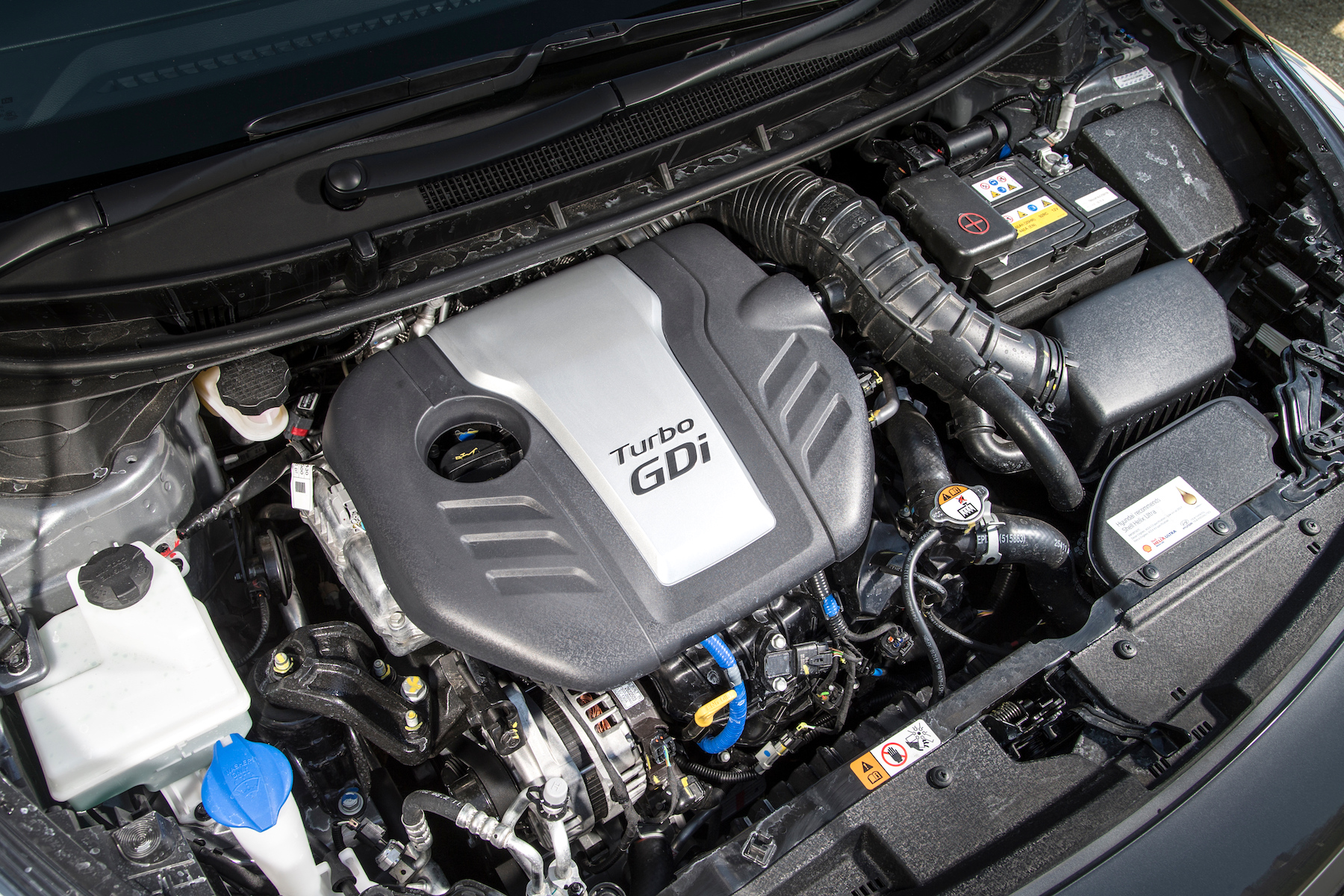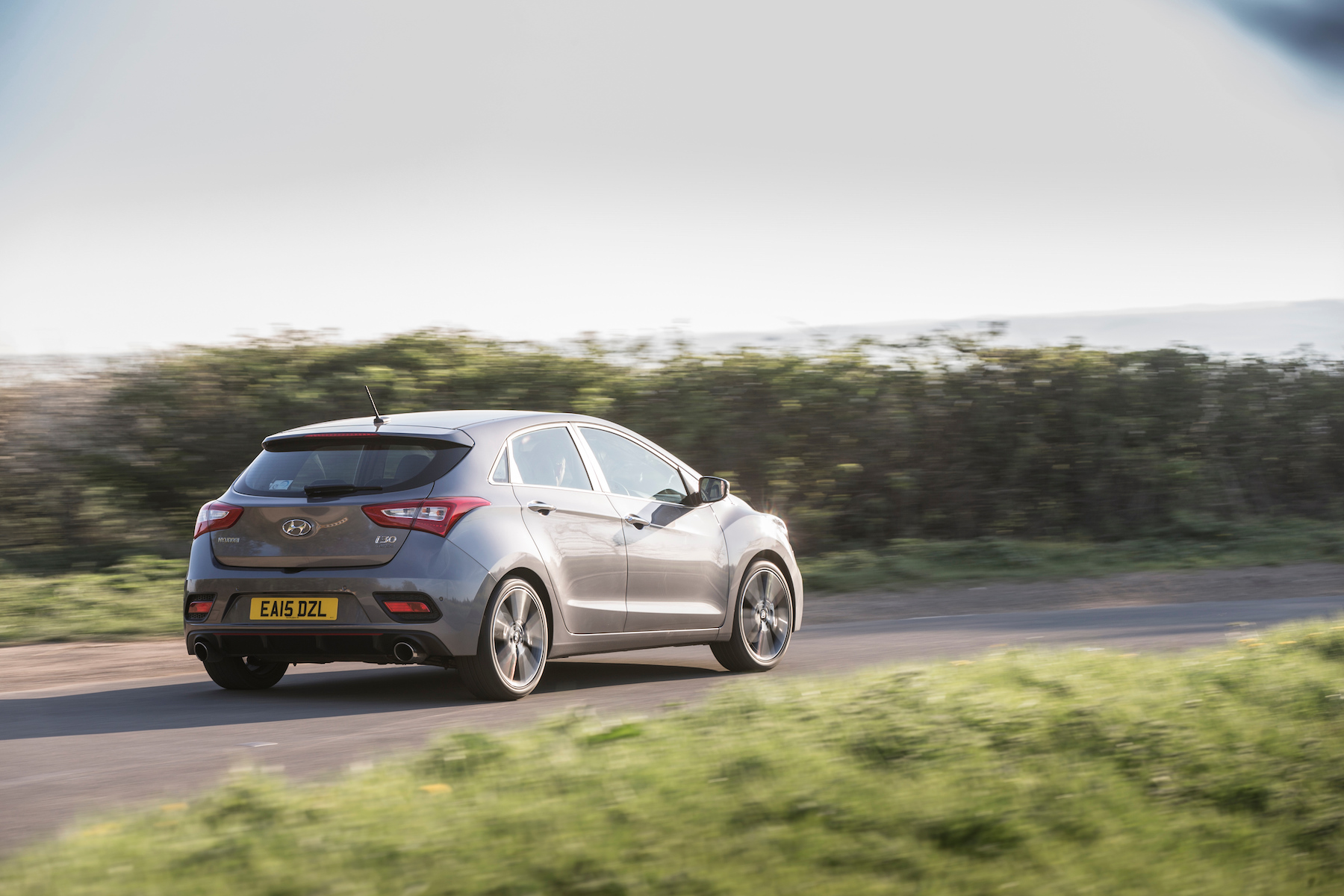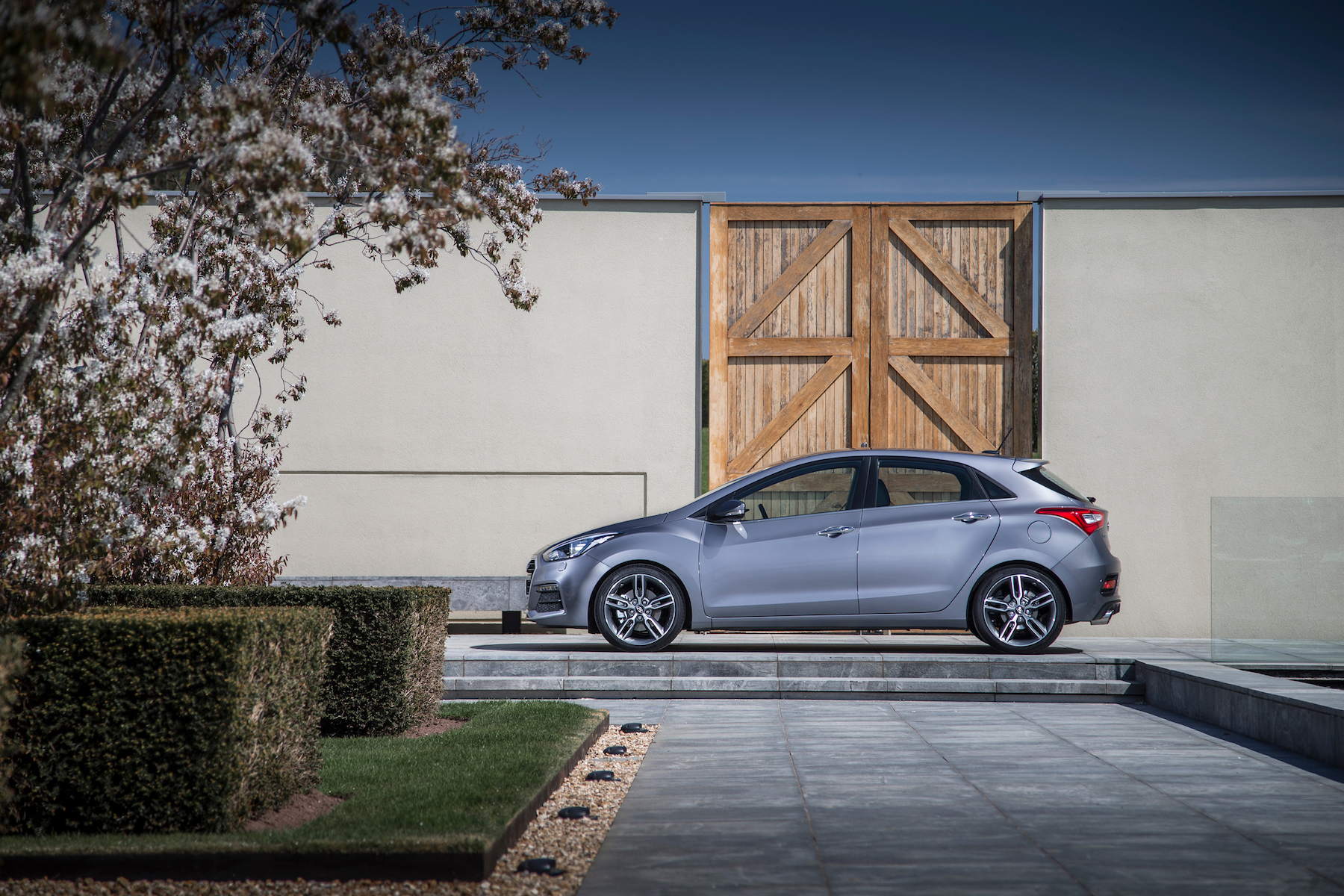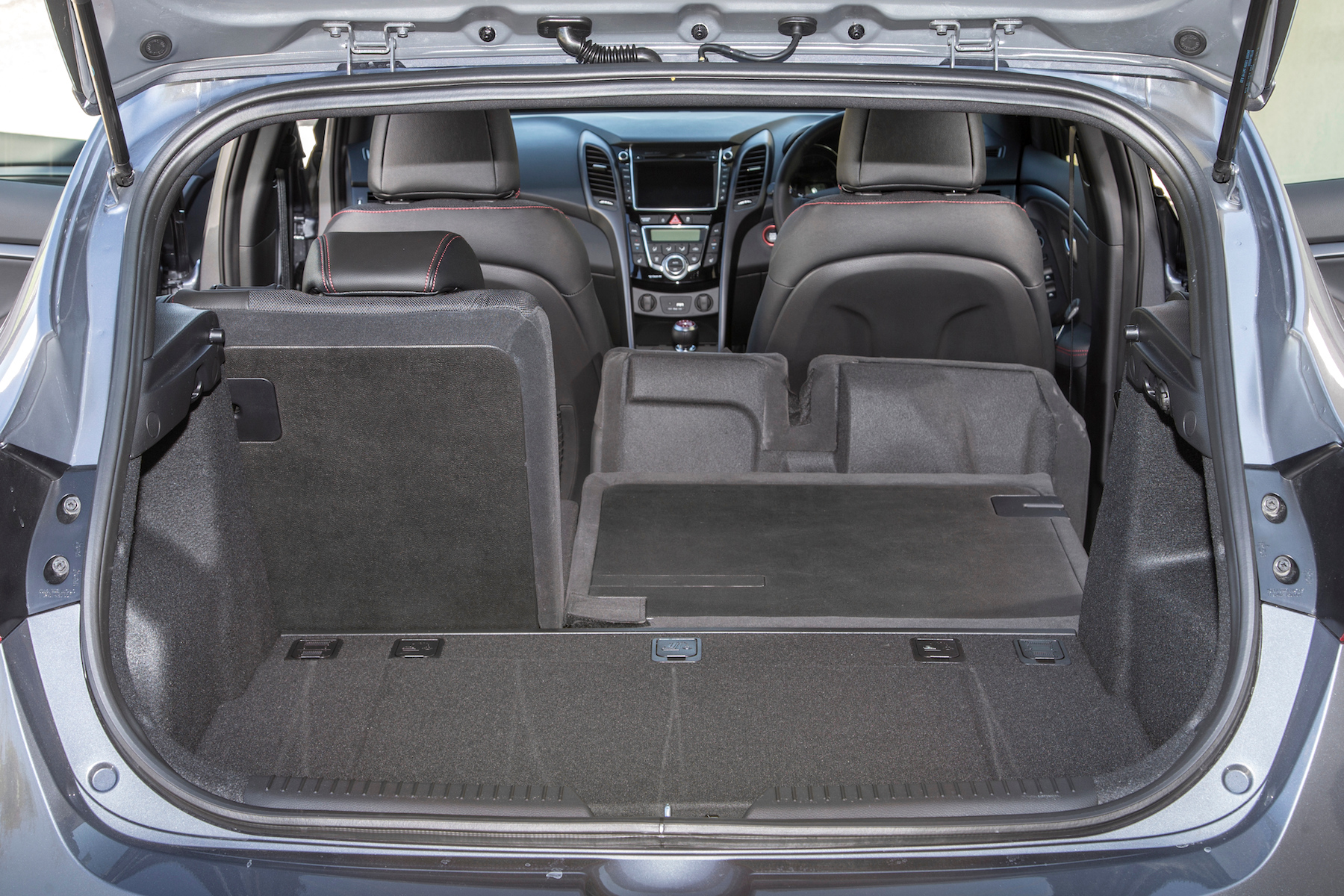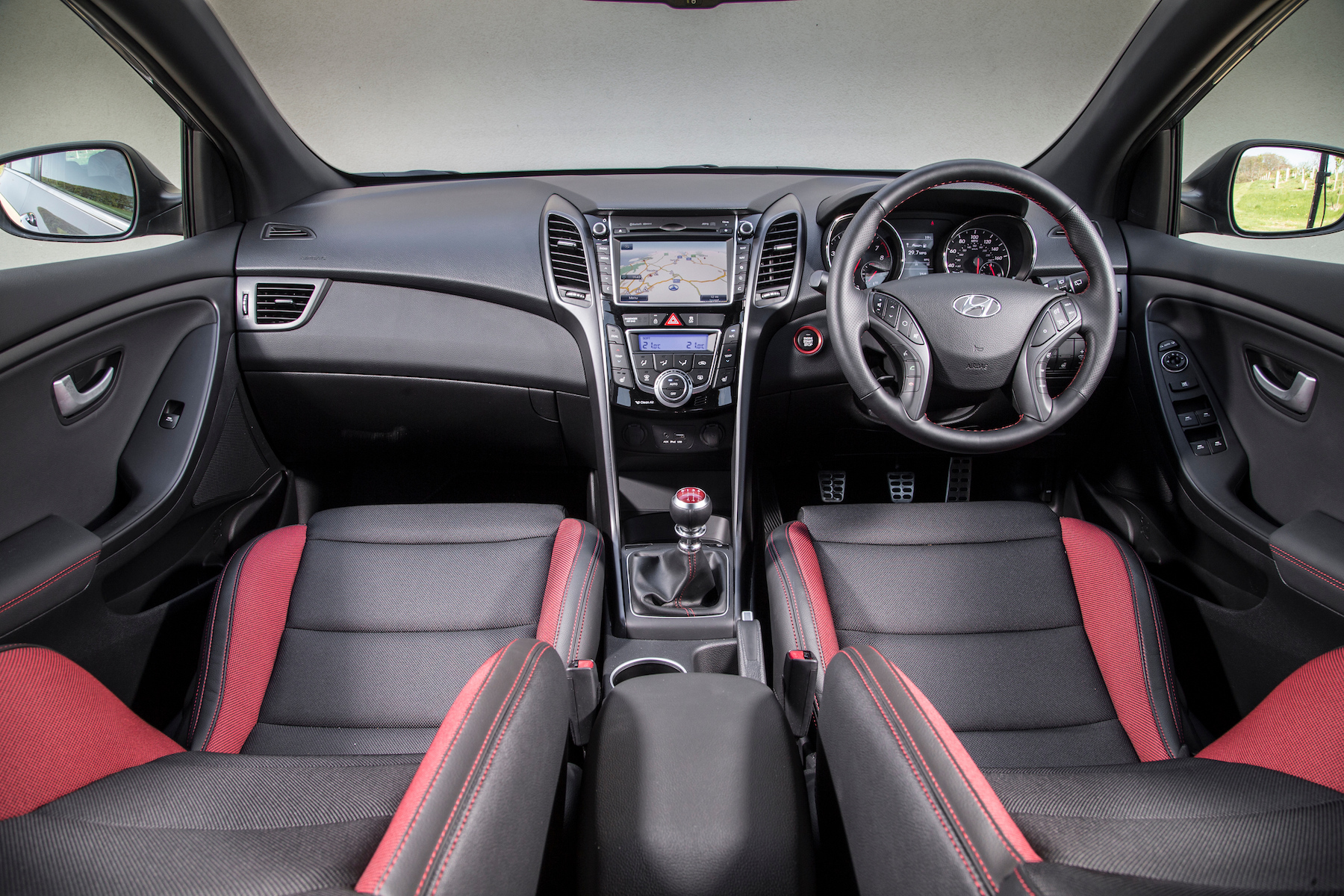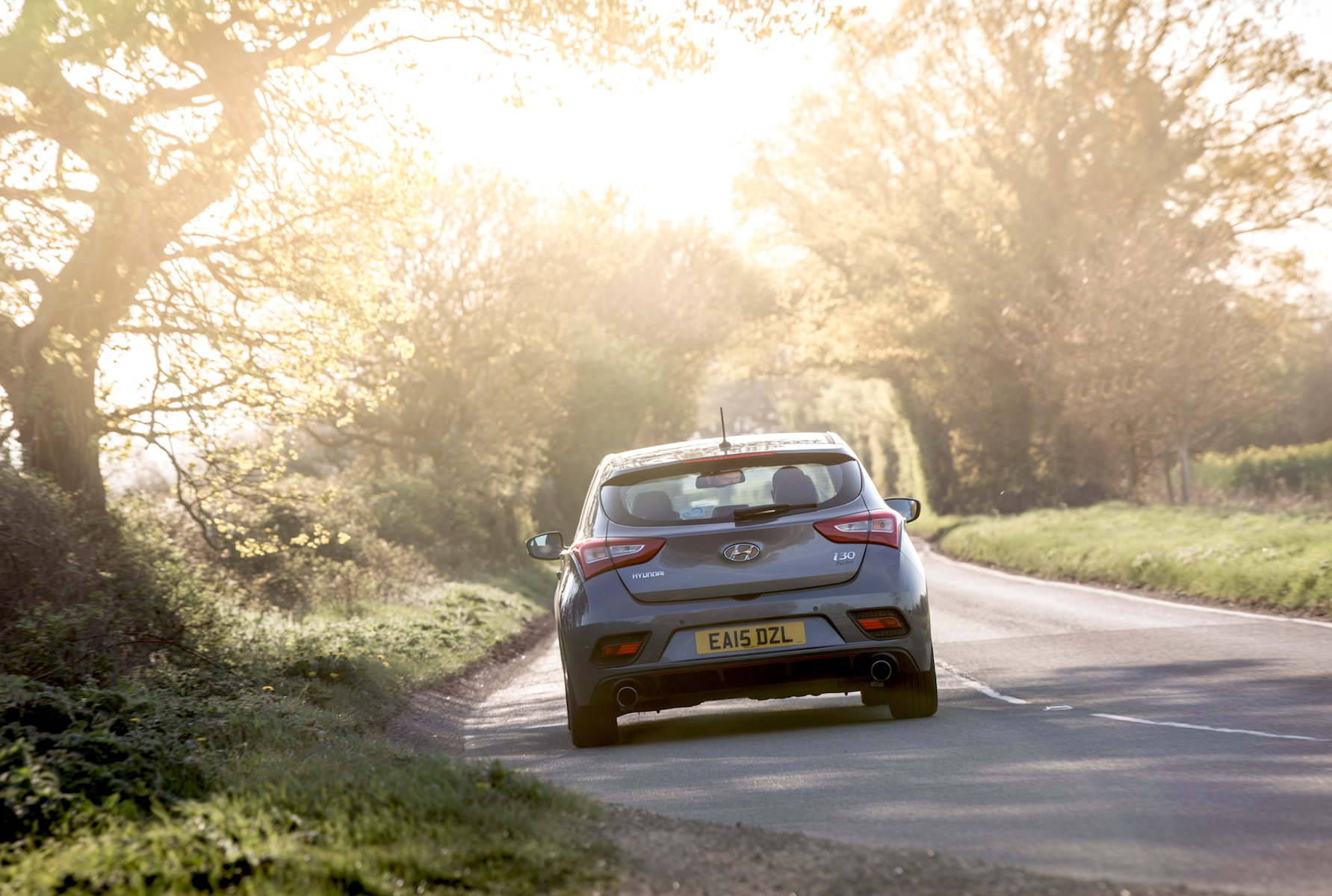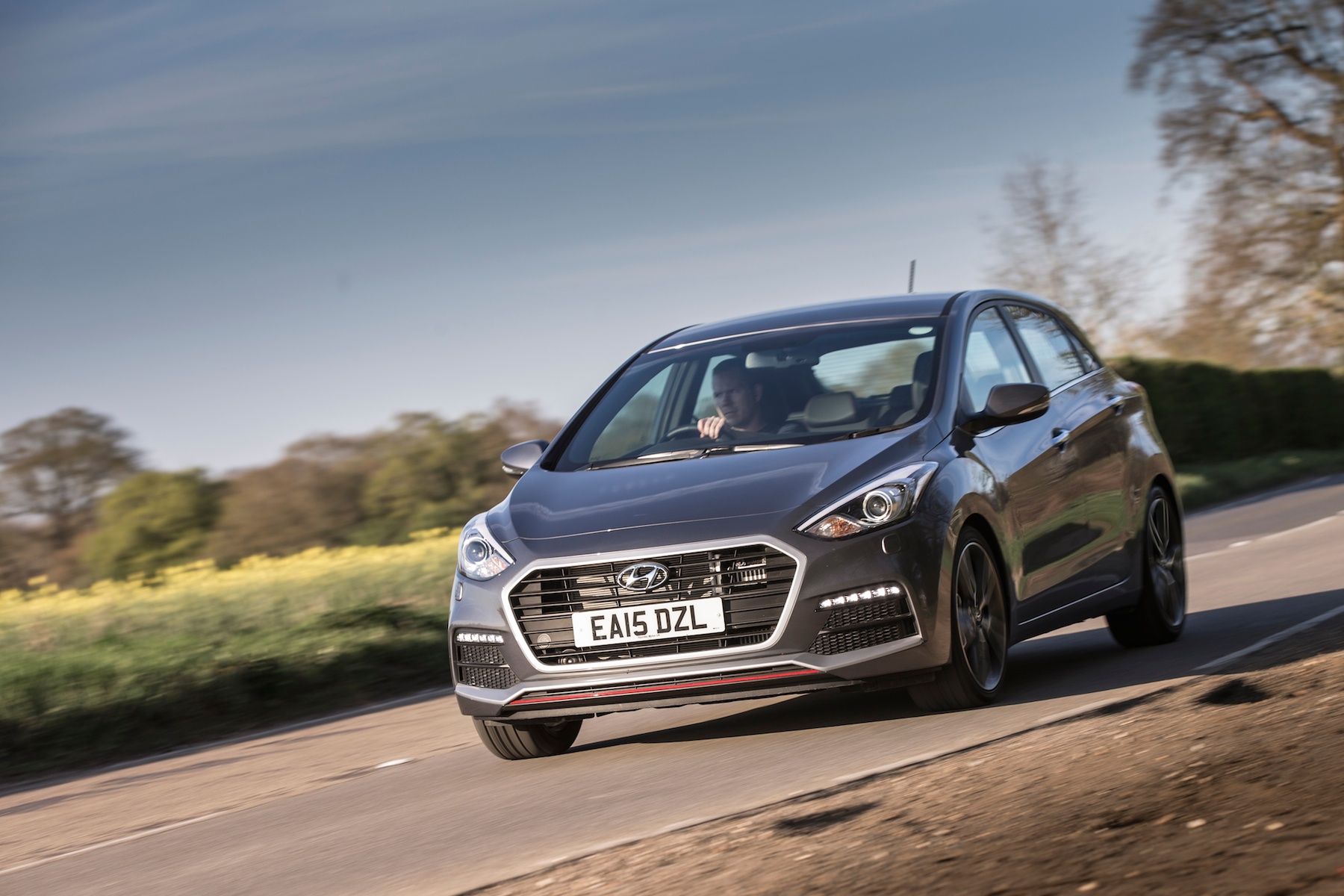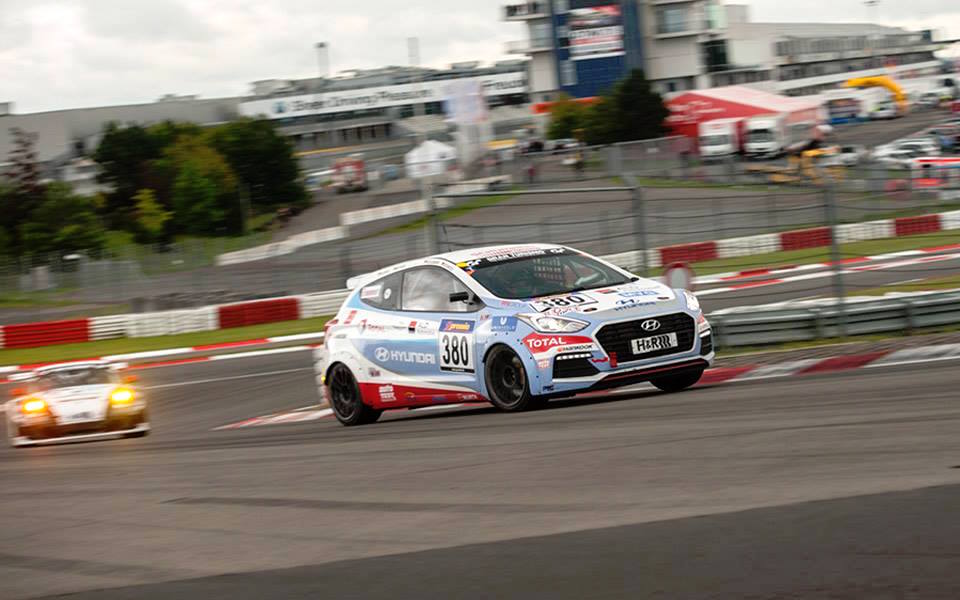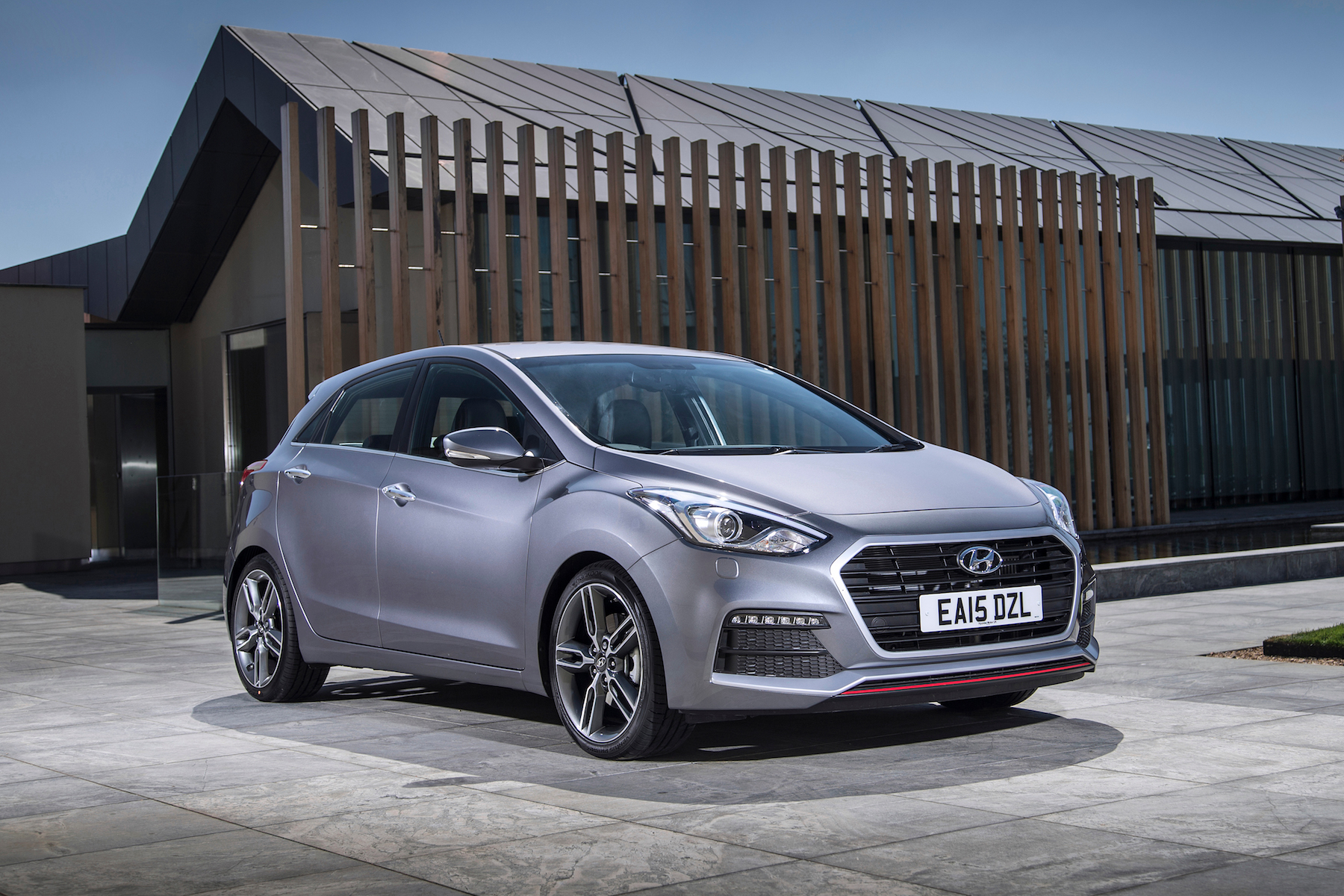 The Turbo is top of the pile when it comes to the Hyundai i30 range. If you want the fastest, most powerful, and priciest version of the Korean company’s family hatchback then you’ve come to the right place.
The Turbo is top of the pile when it comes to the Hyundai i30 range. If you want the fastest, most powerful, and priciest version of the Korean company’s family hatchback then you’ve come to the right place.
It’s also the only i30 available in a three-door body, along with the regular five-door option: as the current hottest Hyundai, now that the Veloster coupé has left these shores, it gives us some insight into what we can expect from the forthcoming N performance sub-brand. Is it one to look forward to?
What are its rivals?
With a starting price of £22,500, the C-segment hatchback i30 Turbo places itself in a slight hinterland. It’s bigger, but more expensive, than supermini based hot hatches like the Ford Fiesta ST whilst also cheaper, but slower, than its class rivals like the VW Golf GTI.
The Seat Leon FR 1.8 TSI is a contender, as are the Ford Focus Red/Black Edition offerings. However, the biggest rival for the i30 Turbo comes from its close cousin, the Kia Pro_Cee’d GT. Using the same engine – albeit in a different state of tune – and with pricing that’s within touching distance of each other, its Korean compatriot will be the main alternative for many.
Which engines does it use?
There’s only one and, like we’ve just said, it’s the same 1.6-litre T-GDi four-cylinder petrol engine that’s found in the Kia Cee’d GT. You might have guessed from the name that it’s turbocharged, of course. Here in the i30 Turbo it produces 183hp – some 18hp down on the Cee’d – but with the same 195lb ft of torque.
Powering the front wheels through a six-speed manual gearbox, the i30 Turbo clocks in a 0-62 mph time of 8 seconds, and a top speed of 137 mph. Although it might be attached to an exhaust system with neat twin tailpipes, the i30 Turbo’s engine is notably quiet as it goes about its business.
What’s it like to drive?
Think of the i30 Turbo as more GT than GTI and you won’t be too disappointed. Despite sports suspension, and 18” alloy wheels with low profile tyres, the ride quality is remarkably comfortable. There’s little body roll in corners and the Hankook tyres provide decent grip. It might be lacking in feel, but engage Sport mode and the quicker steering rack weights up nicely.
The six-speed gearbox has a chunky positive action, and the brakes provide effective stopping power with none of the hypersensitivity that afflicts many new cars. In fact, the only area which holds the i30 Turbo back is, well, the turbocharged engine. Although smooth, it needs to be worked hard to perform, and never feels quite as quick as you would expect.
Fuel economy and running costs
Does anyone buy a performance car with fuel economy as the main concern? Possibly not, but it’s still a consideration. Officially the i30 Turbo will hit a combined 38.7mpg, with C02 emissions of 169g/km.
During our week with the i30 Turbo we managed an average of 28.9mpg. Admittedly this was in late November, making full use of the heated seats, heated steering wheel, and climate control. But it’s still hardly a figure to write home about. Strangely, for a modern car, the i30 Turbo goes without a stop/start system.
Hyundai’s valuable five-year/unlimited mileage warranty comes as standard but, due to that C02, you’ll pay £295 in road tax for the first year, and £205 for each year thereafter.
Is it practical?
It’s based on a family hatchback so, especially in five-door format, the i30 Turbo is more than useful enough for everyday life.
With 378 litres of boot space with the seats up, increasing to 1,316 litres with them folded down, there’s ample room for luggage or flat pack furniture. Interior space is more than adequate, with decent rear seat accommodation and plenty of storage compartments, bins and cubbies.
What about safety?
Having been awarded the full five stars by Euro NCAP, and featuring seven airbags – including one for the driver’s knees – the i30 Turbo is one of the safest places to be in its class.
Vehicle Stability Management and ESP systems are standard, as is tyre pressure monitoring and brake force distribution. There’s also a reversing camera, rear parking sensors, and a sat nav system that reminds you of speed limits for good measure.
Which version should I go for?
Beyond three paint colours and three or five-doors, you’ve got very little choice when it comes to the i30 Turbo. Given that Hyundai has thrown the metaphorical kitchen sink at the car, there are no other boxes to labour over ticking.
Keyless entry, Bluetooth connectivity, automatically folding door mirrors, dual zone climate control, HID headlights, automatic windscreen wipers; there’s not much else you could ask for when it comes to equipment.
There’s also an attractive bodykit, featuring sporty red stripes on the front and rear bumpers, with a rear spoiler and stylish alloy wheels for good measure. Inside there’s a pair of chunky sports seats up front, along with a heated leather steering wheel, aluminium pedals and a black headlining to complete the sporting image.
Should I buy one?
If you’re looking for a well built, practical, refined and moderately quick hatchback then the i30 Turbo could be just what you want. It’s not the fastest hot hatch, nor is it the most economical, but as an all-round proposition it’s hard to knock the likeable i30 Turbo. Perhaps the biggest challenge comes from the ever present shadow of the Kia Cee’d GT.
What it wholeheartedly does is make us excited for the even hotter i30, rumoured to form part of the future N performance range. The i30 Turbo is strong platform to build on, so adding more power can only be a good thing.
Pub fact
Although all the attention is currently on Hyundai’s WRC campaign, the i30 Turbo has proven itself to be an effective motorsport machine. In 2015 it took four wins in the SP2T class of the VLN endurance championship, held at the fearsome Nürburgring-Nordschleife circuit, along with victory in the 24-hour event too.
It perhaps helped that Hyundai has its own test centre at the Nürburgring, with the i30 Turbo road car completed some 110 laps of the Nordschleife during development.
